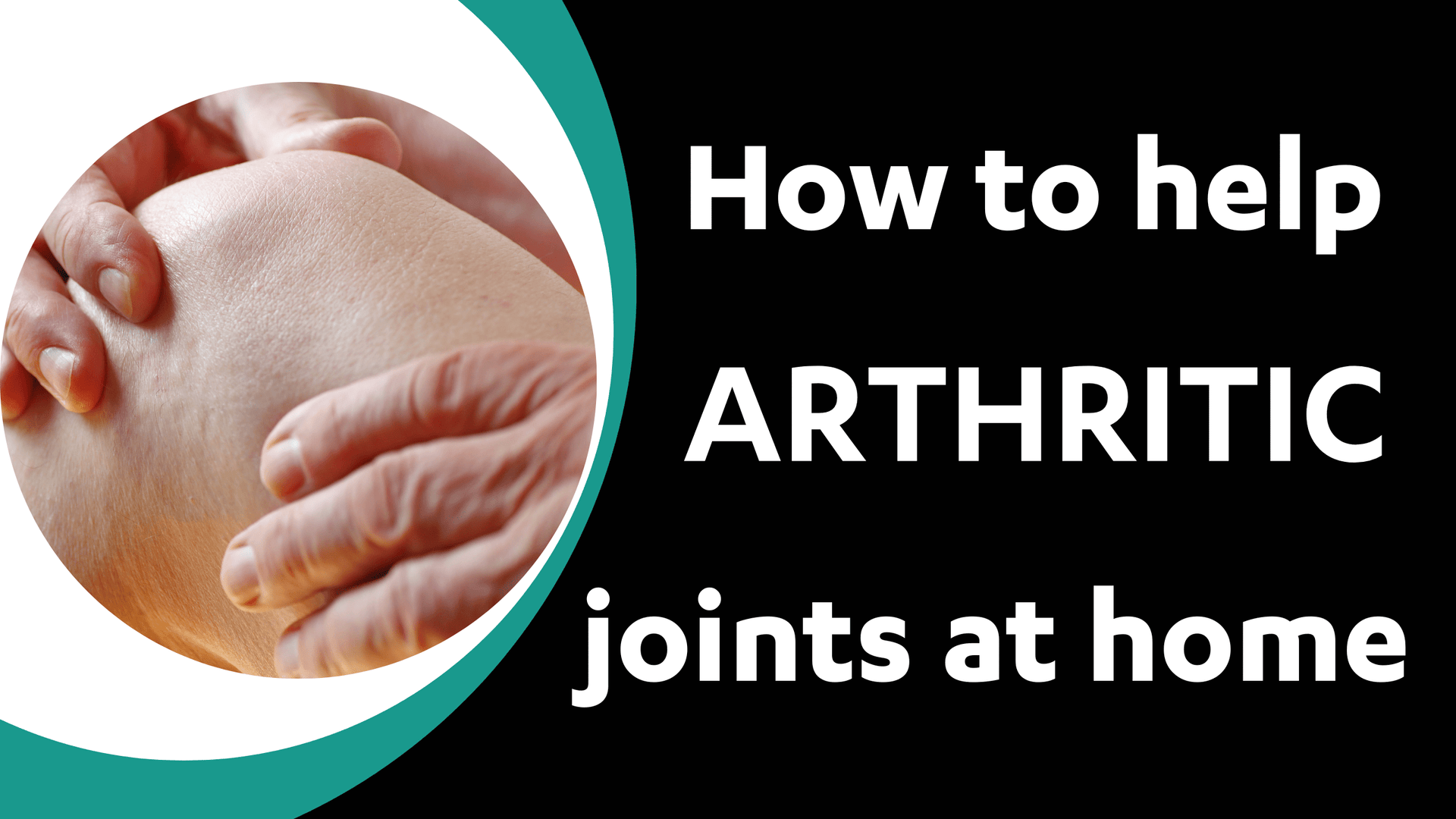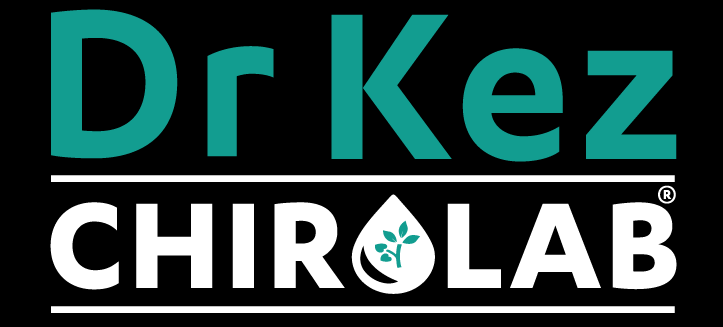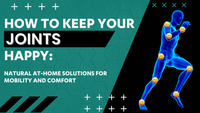
Painful joints affected by weather? How to help treat arthritis at home!
Got creaky joints that seem to turn into your personal weather forecasters? Welcome to the world of arthritis! Picture your joints throwing a little party and inviting stiffness and pain over whenever the weather decides to do a dance. But don't worry, Dr. Kez is here with the inside scoop on how to give those unruly joints a taste of relief right in the comfort of your own home.
So, what exactly is arthritis?

Imagine a treasure trove of over 100 types of arthritis and related troubles. What's their common gig? They all play "Let's Mess with the Joints," starring stiffness and pain. Think of osteoarthritis as the main actor – it's the one where your cartilage takes a vacation, causing your joints to rub together like old pals. And trust me, that's not a friendly reunion. Over time, this bone bonanza leads to major pain and inflammation, especially in joints that have seen some action before, like your spine, hands, hips, and knees. This pain party can go from mild to wild, taking a toll on people's lives like an uninvited guest.
But wait, there's more! Say hello to rheumatoid arthritis – it's like the evil twin that targets both sides of your body, especially the hands, wrists, and knees. And guess what? It's a bit of a drama queen, not only messing with your joints but also poking around your organs. Unlike osteoarthritis, this troublemaker is an autoimmune superstar, where your immune system goes rogue and starts attacking your own tissues. Normally, your immune system is like your trusty bodyguard, but in this case, it’s turned into a rebellious teenager.
Hold onto your hats, because the numbers are in!

Get ready for a jaw-dropping fact: 1 in 6 Aussies (that's Australians for you) – yes, you heard it right – are in a joint jam called arthritis. And guess what? The party's growing! Blame it on the lack of dance moves – I mean, physical activity – and the extra weight some people decide to carry around. Ladies, you might be wondering why you're on the guest list more often; it's all about hormones and your supercharged immune system. Arthritis might pop up in your 40s, 50s, or 60s, but surprise, even young champs can join the party. Brace yourself, everyone's invited, but the good news is prevention is your VIP ticket.
Hey, can the weather really mess with your joint groove?

You betcha! Imagine your joints as weather-sensitive divas. When the temperature and weather do a little jig, your joints might just throw a hissy fit. I mean, who can blame them? My grandma used to predict rain by feeling it in her knees. Some folks take this act to the next level and move to more joint-friendly climates, just to avoid the fuss. Turns out, damp and windy days with low atmospheric pressure are like the ultimate joint pain triggers, making you ache about 20% more than usual. It's like your joints are secretly meteorologists! When the pressure drops, the fluid in your joints thickens, making them stiffer than a board. And trust me, if you've got arthritis, you're nodding along like a bobblehead.
Why is it such a hard condition to tame?
Arthritis isn't just about bones; it's a joint jamboree involving both bones and the soft tissues that wrap around them. Imagine a tug-of-war between tight muscles – they're like overenthusiastic neighbours squishing the bones together, squeezing the joint space. This tag-team effort puts too much pressure on the bone ends and the fancy articular cartilage covering them. In a perfect joint world, there's synovial fluid and cartilage to make things glide smoothly when muscles bust a move. But when muscles go all "too-tight-tango," the fluid dwindles, and shock absorption takes a hit. This cozying up of bones over time leads to cartilage taking a superhero role it never signed up for. It's like cartilage becomes the bouncer at a rowdy party, trying to fend off the bone-bumping shenanigans. Eventually, the cartilage throws in the towel, bones start disappearing altogether, and that's when you get the "Meet Mr. Arthritis" moment.
In the dance of life, arthritis may try to lead, just keep moving to your own rhythm.
Ready for the grand finale? Let's heal those joints at home!
But fret not! When bones and soft tissues are entangled in this joint circus, a healing extravaganza is in order. Step one: Set those muscles free from their tight grip. Next up, it's time for some construction work – providing the building blocks for both bone and soft tissue repairs, delivered straight to the joint's doorstep. Lastly, let's tackle inflammation head-on and give those weary cells the energy shot they need to hit the healing expressway. It's like throwing a multi-faceted party for your joints, complete with muscle loosening, tissue rebuilding, and inflammation soothing.

Step 1: Loosen those muscles. Think of your muscles like party crashers making your bones squeeze together. Dry needling and cupping are like the superhero duo that swoops in to save the day. But guess what? You can bring the party home with a vacuum cupping set. Professional results in your own home! Your muscles will thank you for the freedom to move and groove.
Step 2: Feed your joints with the right stuff. It's like a recipe for a joint smoothie – but in the form of creams. Start with the Bone Aid Relief Cream, then add some Trauma Relief Cream, and top it off with a dollop of Heativate® Relief Cream. Lather up three times a day to keep the joint carnival going strong.


Step 3: Supercharge the healing. Ever heard of therapeutic ultrasound? It's like your joints' favourite DJ, playing healing tunes. These sound waves give your damaged cells a pep talk, encouraging them to heal faster than a speed racer. A little ultrasound magic, combined with those creams, and you've got a recipe for relief that's music to your joints' ears.
Our power packed device only needs to be used for a short period of time (usually less than 10 minutes) on the pulsed setting with the gel, once daily for exceptional results with arthritis. When you bring Bone Aid Relief Cream and Trauma Relief Cream to the party by applying them first, this will result in the ultrasound introducing the active ingredients to the inner gang, all the way deep into the joint for the most beneficial results. Once finished wipe off the gel and then reapply all three creams, including Heativate® Relief Cream and you’ll have created a friendship made in heaven.
So there you have it, folks! There are so many things that you can do to help with reducing the pain of arthritis, literally from the comfort of your own home and maybe a walk around your local neighbourhood 😉 Using products like the trio of creams and even the therapeutic ultrasound over the joint can make the world of difference to living with this potentially debilitating condition. Keep in mind that anything that you do that will increase inflammation in your body will make your arthritic joints stiffer and more painful, including what you eat. For more information on how food can impact inflammation in your body, please check out this blog. Arthritis might try to steal your groove, but with Dr. Kez's joint-saving tips, you'll be dancing through life like nobody's business.







